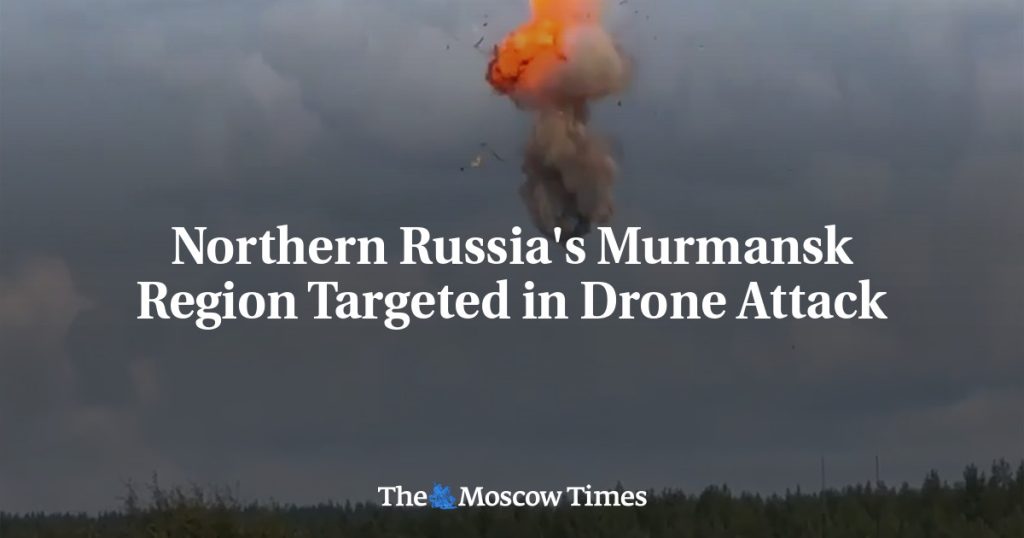Authorities in northern Russia’s Murmansk region issued a drone attack warning after unverified reports of a drone being shot down. Flight restrictions were imposed at local airports in Murmansk and Apatity, with Governor Andrei Chibis stating that necessary security measures were being taken. The state aviation agency emphasized the priority of ensuring flight safety in the region. Former regional coordinator Violetta Grudina shared a video showing Russian air defense systems destroying a drone allegedly from Ukraine near the closed military settlement of Vysoky, over 1,000 miles north of the Ukrainian border. Workers at local plants and mines were reportedly evacuated multiple times due to drone attacks, which are unprecedented in the region since Russia’s invasion of Ukraine.
The reported drone downing in Murmansk would mark the furthest a Ukrainian drone has flown into Russian territory since the conflict began. This incident comes amid escalating tensions between Russia and Ukraine, with drones being used as a tool for reconnaissance and attacks. The presence of drones in the region has raised concerns about the potential for further hostilities and the need for enhanced security measures. The situation highlights the ongoing conflict in Eastern Europe and the impact it has on neighboring regions, prompting authorities to take proactive steps to address the drone threat and ensure the safety of civilians and critical infrastructure.
The conflict between Russia and Ukraine has been ongoing for over two years, with both sides engaging in military activities and facing accusations of violating international laws. The use of drones in the conflict has added a new dimension to the warfare, allowing for more covert operations and targeted attacks. The reported drone attacks in Murmansk show the expanding reach of this technology and its implications for regional security. The downing of the drone over Russian territory raises questions about the effectiveness of air defense systems and the capabilities of unmanned aerial vehicles in modern warfare.
The situation in Murmansk highlights the vulnerability of civilian areas to drone attacks and the need for increased vigilance in monitoring and responding to such threats. The presence of drones in the region poses a risk to air traffic and critical infrastructure, necessitating coordinated efforts by authorities to mitigate these risks. The evacuation of workers from local plants and mines underscores the disruptive impact of drone attacks on daily activities and the importance of having contingency plans in place. The incident serves as a wake-up call for the authorities to enhance their capabilities in countering drone threats and safeguarding the region’s security.
The response to the reported drone downing in Murmansk reflects the broader geopolitical tensions between Russia and Ukraine, with both countries engaging in military posturing and territorial disputes. The use of drones as a tool for surveillance and attacks has become a common tactic in modern warfare, posing challenges for conventional defense systems and security protocols. The incident in Murmansk underscores the need for continuous monitoring of airspace and swift responses to potential threats, in order to prevent escalation of conflicts and protect civilian populations. As technology continues to evolve, so do the tactics and strategies employed in conflicts, highlighting the importance of adapting security measures to address emerging threats such as drone attacks.
In conclusion, the drone attack warning in Murmansk serves as a reminder of the complex security challenges faced by regions bordering conflict zones, as well as the need for effective measures to counter emerging threats such as drones. The incident highlights the evolving nature of warfare and the role of technology in shaping military strategies. As tensions between Russia and Ukraine persist, it is imperative for authorities to remain vigilant and proactive in addressing potential security risks. The reported drone downing in Murmansk underscores the need for enhanced coordination between defense agencies and civil aviation authorities to ensure the safety of airspace and critical infrastructure. By staying ahead of emerging threats and investing in robust security measures, regions like Murmansk can better protect themselves from external aggression and maintain stability in times of uncertainty.


